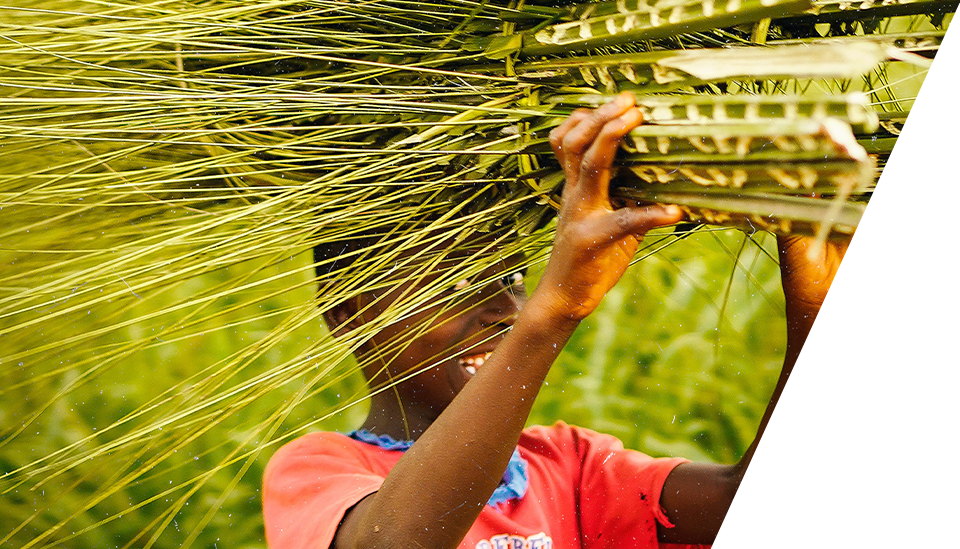Livestock counts
This post originally appeared on the FAO CFS blog

This week marked a milestone for the Committee on World Food Security (CFS). For the first time since its reform, it recognised the role of livestock in addressing malnutrition, sustainable agriculture and climate change.
Two years ago CFS asked the High Level Panel of Experts to prepare a report on sustainable agricultural development for food security and nutrition, including the role of livestock. The report was presented and endorsed at the 43rd plenary session of the CFS in Rome this week and many of members took the stage to state their positions in regards its recommendations.
The extensive discussions taking place these days around the topic of sustainable livestock production and nutrition highlight just how complex the issues are. Until just a few years ago the word ‘livestock’ brought to my mind a simple picture of a cow. Discussion on livestock at this week’s CFS plenary sessions and side events ranged from consumption of livestock related agricultural products to the role of women in livestock management.
It is interesting that there is a consensus as to the importance of the sector, and how much the production of livestock counts for in the global agriculture sector (one third of the whole sector according to the report). There is also agreement that this sector has suffered a serious lack of atention in the past decades. The increasing role of livestock in feeding the world is now recognized by governments, academia, civil society, private sector and UN agencies.
According to some forecasts, the demand for animal protein, milk and eggs will rise by 50% by 2020. This demand has not only led to increased production but has also supported major technological innovations and structural changes in the sector, although not necessarily assuring a good or stable income for farmers.
However, there are real differences in approach as to the types of production and the impact of the sector on climate change, human and animal nutrition, and land use, intensification of production, animal feed demand, cultural identity, traditional practices, and values.
And there I was thinking about one cow!
One aspect of the report particularly stuck with me: “livestock can also serve as an illustration for the wider agriculture sector to explore possible pathways of sustainable agriculture development for FSN (food security and nutrition), with the view to recommending appropriate actions by policy-makers and stakeholders in different contexts”.
Could it be that my cow can be the leading character in the script to change the food system and achieve sustainable agriculture? Or are we putting too much pressure on a single sector?
Just as there are environmental, economic, and social and health challenges to sustainable agricultural development, these issues also confront the livestock sector within it. As the report by the High level Panel shows, the livestock sector has an important role in reducing the pressure on natural resources, as well as a key source of protein for a hungry world, contributing to ensuring food security and nutrition for all.
Consumption seems to be the most critical point to address. It is the demand for agricultural products that drives their production and thus the future development of the livestock sector.
Farmers’ views
How livestock practices can foster sustainable development in agriculture was the topic of a CFS side event hosted by the World Farmers’ Organization (WFO). According to WFO representative Mr. Koen Mintiens, sustainability means that livestock farmers can operate in an attractive economic environment. An estimated one billion poor people, many of them women, derive at least part of their livelihood from livestock. “All livestock farmers all over the world must be able to financially support their families by achieving an acceptable income. They should be entrepreneurs, engaged in livestock production as an attractive business,” Mr. Mintiens said.
Investments in different production types are necessary. “At one end, there is intensive specialized production which does more with less. Livestock farms here are often positioned at the start of the food production chain but at the end of the payment chain and often have to live with the leftovers. At the other end, there is small scale extensive farming, where less is more. Here farmers often have sufficient natural resources available for livestock production but are still unable to fill local or national markets. The important thing is that all production types should have sufficient access to markets.”
Partners and friends
WFO Secretary General, Marco Marzano de Marinis, highlighted a very important issue during the event: farmers cannot support the sustainable development of agriculture and livestock sector alone. Partnerships are crucial for positive results. “If we want to have a real impact on making this world sustainable we cannot work in isolation. We have to join forces and make sure that we do our job to the best of our capacities. We need positive multi-stakeholder partnerships where different actors effectively share their own expertise for the achievement of common goals: a joint commitment of different stakeholders for a sustainable livestock sector.”
I salute that. We all need good friends for sustainable development.
Blogpost by Ksenija Simovic – #CFS43 Social Reporter: ksenijasimovic(at)gmail.com
Photo credit: Dominik Schraudolf on Pixabay
This post is part of the live coverage during the 43rd Session of the Committee on World Food Security (CFS). This post is written by one of our social reporters, and represents the author’s views only.

